
Positioned at the eastern entrance to the Tamar River in northern Tasmania Low Head Lighthouse stands as Tasmania’s oldest continuously operating lighthouse and third oldest in Australia.
This lighthouse has guided vessels approaching Launceston which was historically one Tasmania’s most significant most significant maritime corridors.
Low Head Lighthouse functions as part of Tasmania’s network of coastal lights, working in conjunction with Mersey Bluff Lighthouse to the west and Deal Island Lighthouse to the north in Bass Strait to provide comprehensive navigational guidance for vessels traversing Tasmania’s treacherous northern waters.
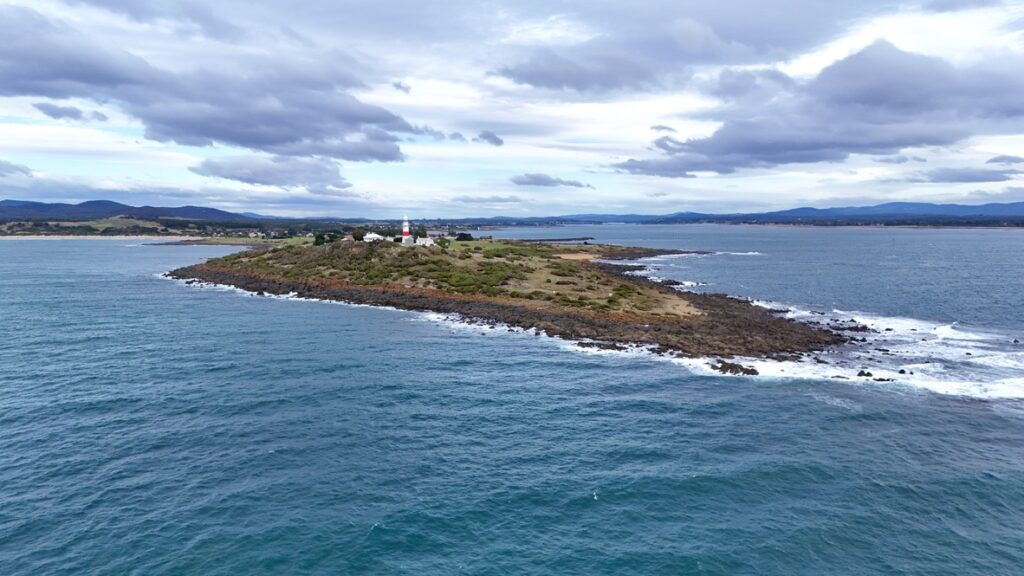
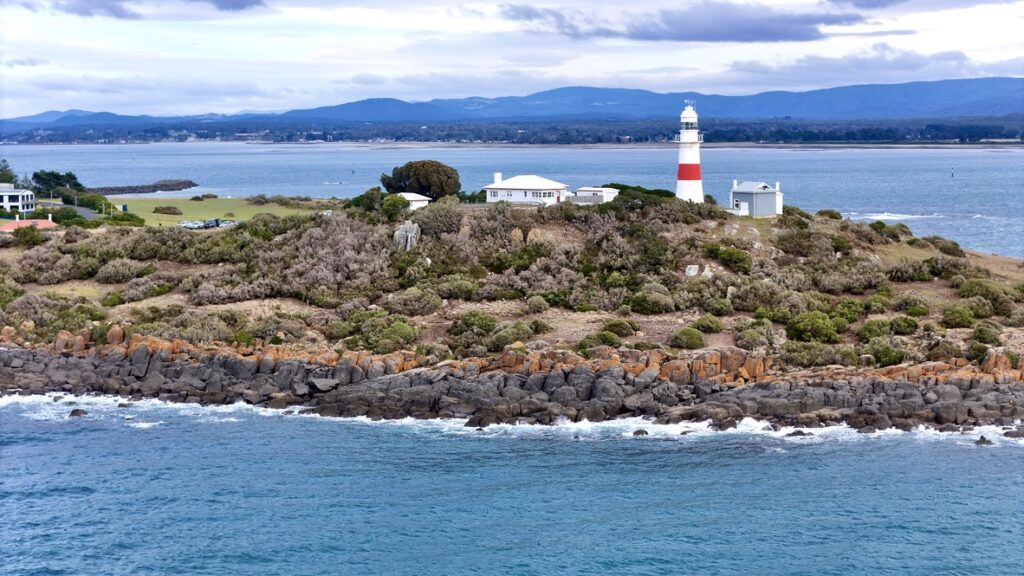
The lighthouse presides over a notoriously challenging maritime approach, where the meeting of the Tamar River estuary and Bass Strait creates complex tidal conditions and dangerous shoals. This critical position marks the point where vessels must navigate a careful transition from open sea to the sheltered but narrow channel of the Tamar River, a passage that has claimed numerous vessels throughout Tasmania’s maritime history.
A pilots and a signal station was established at Low Head (Georgetown) in 1805 and is Australia’s oldest continuously used pilot station.
The urgent need for a lighthouse at this location had been highlighted by multiple maritime incidents in the river entrance, combined with increasing trade through the port of Launceston. The strategic importance of the Tamar River as Tasmania’s primary northern commercial gateway made establishing a reliable beacon at this critical location an urgent priority for colonial authorities.
This first light was known as the ‘Georgetown Station’ was Australia’s third and Tasmania’s second lighthouse to be built. The tower was built in 1833 and designed by the then Colonial Architect John Lee Archer who was responsible for the design of many other Tasmanian lighthouses. It was constructed of local rubble with a coat of stucco to make the structure durable and able to be painted white to provide a visual landmark. The keepers’ quarters consisted of four rooms attached to the base of the tower which was unique among Tasmanian lighthouse of the day.
Conditions were poor on the early Tasmanian lightstations and Low head was no exception, being manned by a superintendent (headkeeper) and two convict assistants who were locked in their quarters overnight.
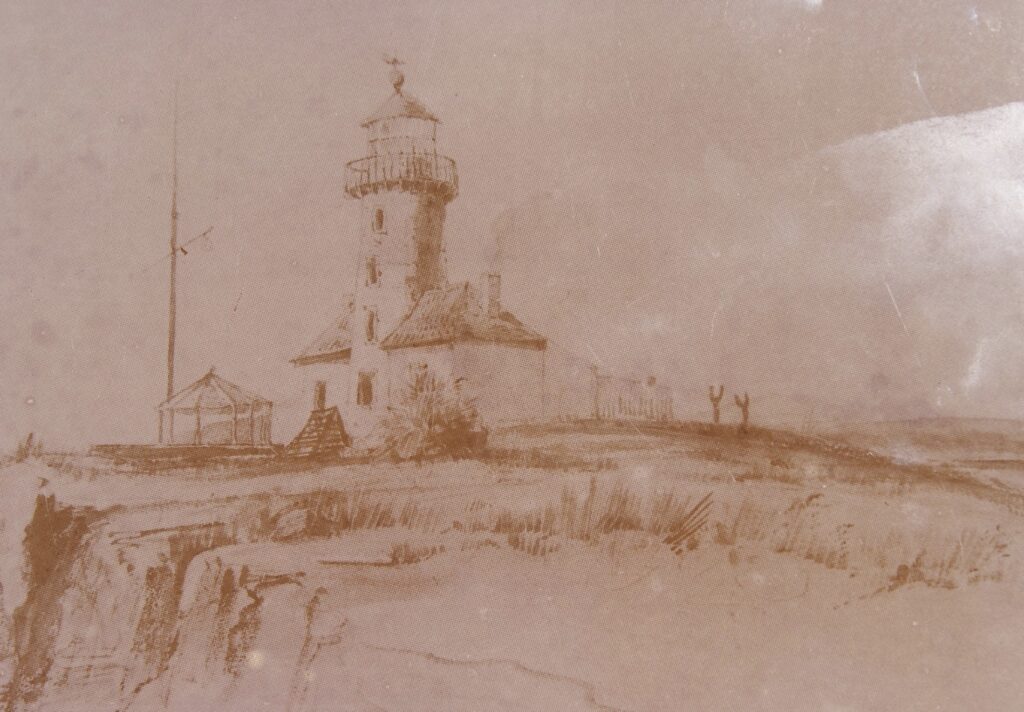

The 1833 tower was poorly constructed and after 50 years had fallen into a state of disrepair. In 1888, this original convict-built stone tower was demolished and replaced with the present double brick structure. The current lighthouse was designed by Tasmanian Colonial Architect H. Conway and embodies the refined lighthouse architecture of the late Victorian period. The impressive cylindrical tower rises 19m from base to lantern, with a focal plane 43m above sea level due to its commanding position atop the Low Head promontory. This strategic height enables the light to be visible for over 24 nautical miles, serving as a critical first sighting for vessels approaching Tasmania from the north.
The lighthouse’s construction represents a significant achievement in colonial engineering. Built from locally quarried bluestone and faced with distinctive white-painted bricks, the tower features a classical tapered design that combines aesthetic elegance with structural stability. The lighthouse’s robust construction has allowed it to withstand nearly 140 years of Bass Strait’s often severe weather conditions with remarkable resilience, establishing it as one of Australia’s most historically significant and enduring lighthouses.
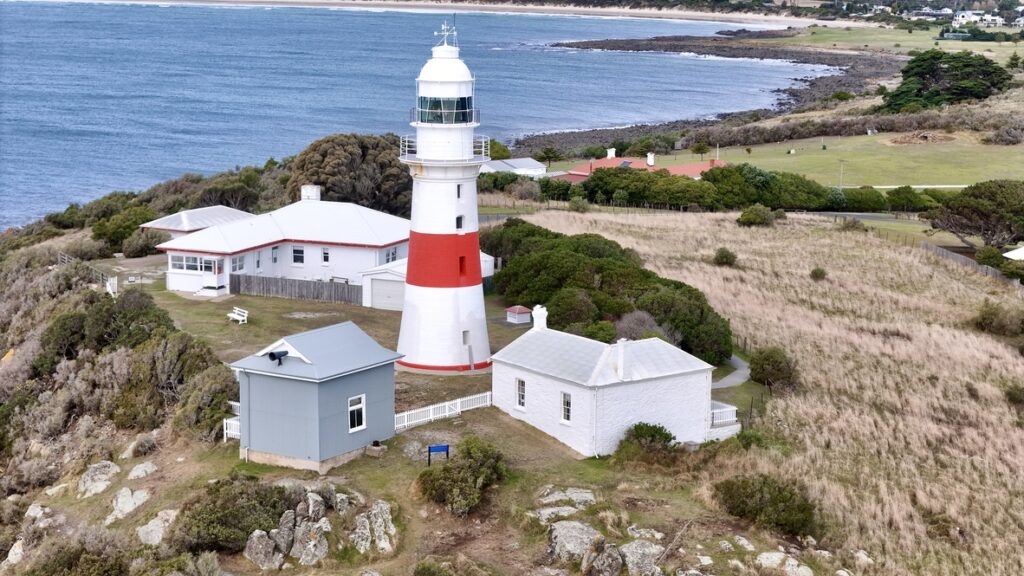
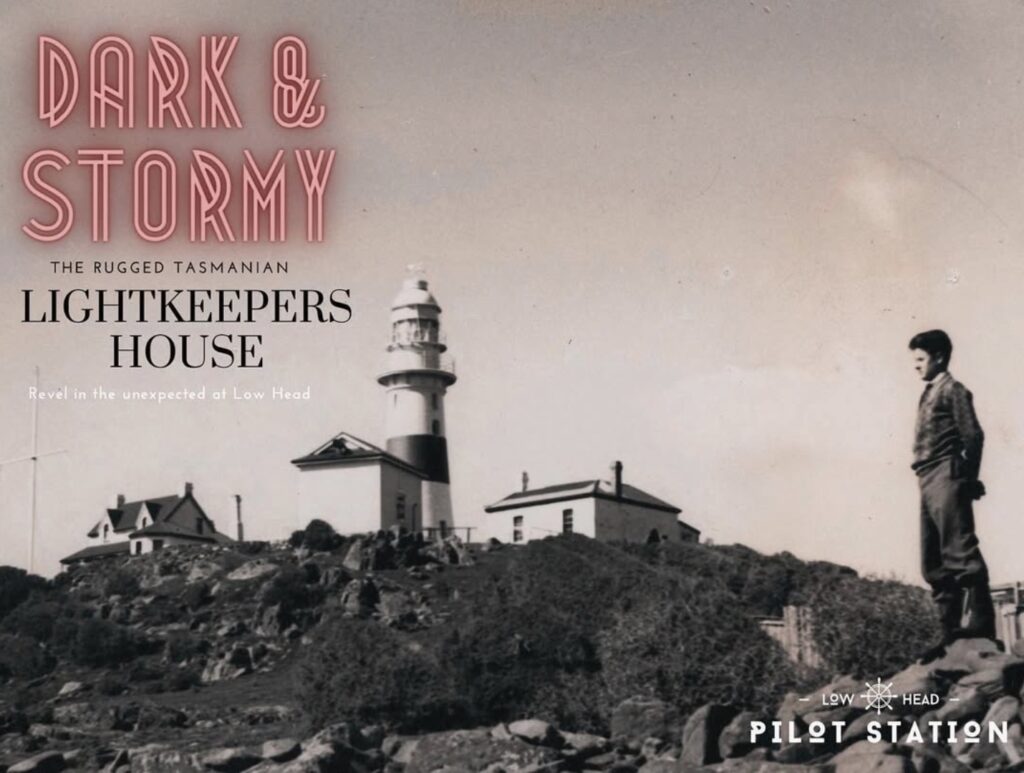
An auxillary red light to cover Hebe Reef was been installed in 1898 and the lens apparatus was modernised in 1916 with a more up-to-date Chance Bros. revolving lens.
In 1926, a broad red band was painted around the middle of the tower to ensure adequate visibility during daylight hours. In 1929 Tasmania’s only a foghorn was instated at the station but discontinued in 1973 due to improvements in navigational equipment. In 1940, electricity replaced the old vapourised oil system and mantle, and the clockwork rotating mechanism was replaced by an electric motor.
The station was also responsible for the smaller Tamar Leading Lights which were separately manned for some years.
Life for keepers at Low Head was less isolated than at many of Australia’s more remote lighthouse stations, due to its proximity to the small settlement of Low Head and the larger town of Georgetown nearby. Nevertheless, the lighthouse complex included substantial stone cottages for multiple keepers and their families, establishing a close-knit community centred around the light station. The keeper’s quarters, pilot station, and various outbuildings formed a largely self-sufficient compound that embodied the traditional lighthouse keeper lifestyle. It’s worth noting that from 1865 to 1912, the light was under the control of Alfred C. Rockwell and his son Alfred Rockwell Jnr, a period of 47 years!
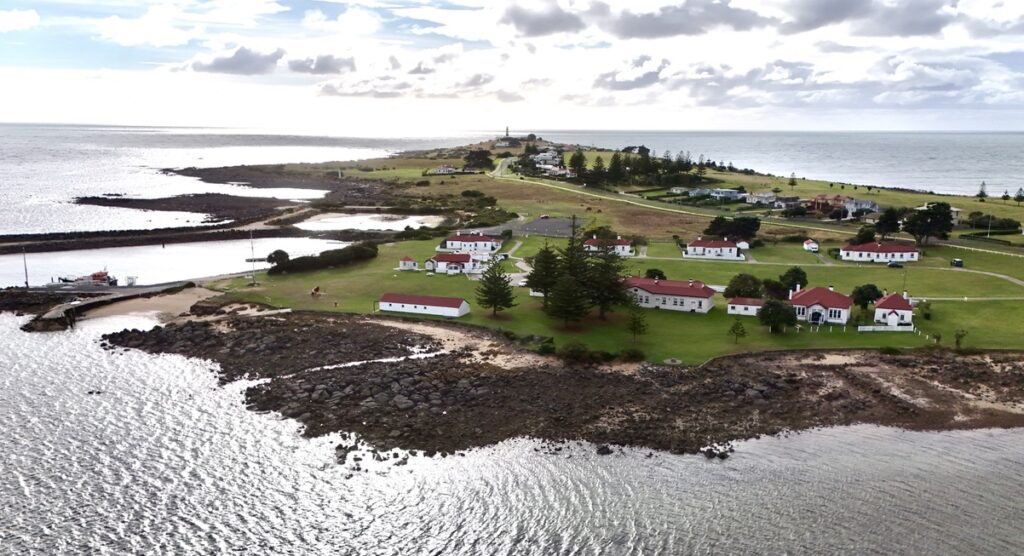
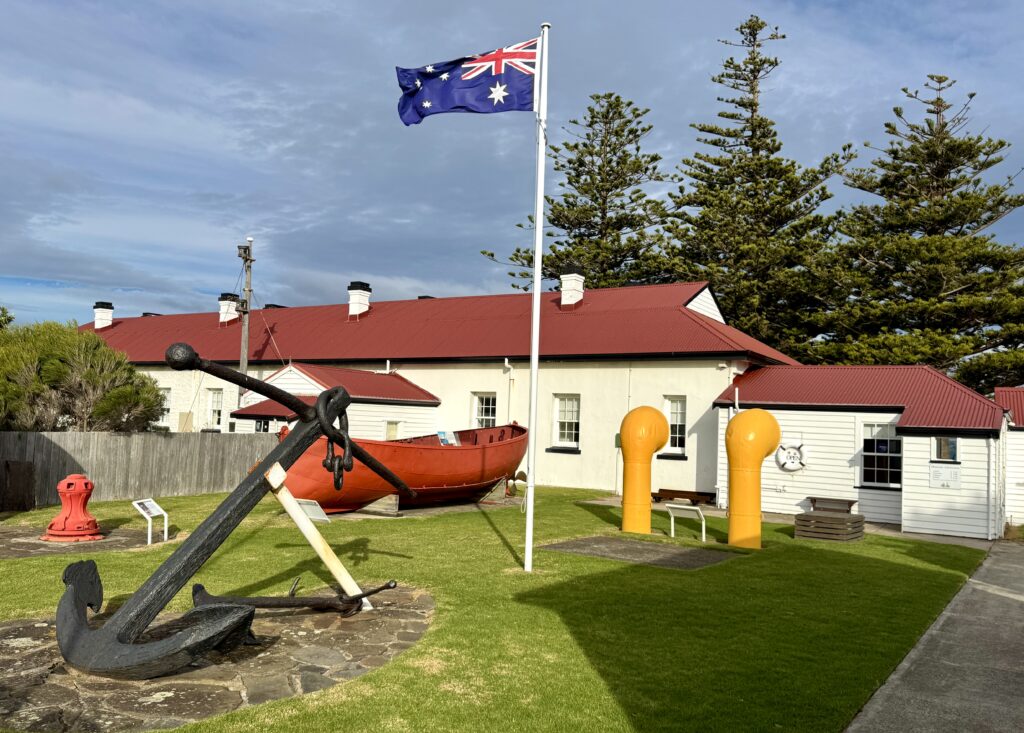
Despite its somewhat sheltered location compared to more exposed oceanic lighthouses, environmental conditions at Low Head could still present considerable challenges. The headland’s position makes it particularly vulnerable to the powerful northerly gales that surge through Bass Strait, with historical records documenting numerous storms where extreme winds tested both the lighthouse structure and the resolve of its keepers.
Historical records detail several dramatic incidents where keepers maintained the light through extraordinarily difficult conditions. One particularly notable storm in 1895 saw waves breaking over the lighthouse compound despite its elevated position, with wind gusts so severe they reportedly caused the massive stone tower to perceptibly sway. Throughout such ordeals, the keepers maintained continuous watches, ensuring the light remained operational as a crucial guide to any vessels caught in the tempest.
The waters surrounding Low Head have witnessed numerous maritime disasters throughout history, highlighting the vital importance of the lighthouse’s warning beam. Notable incidents the 1808 wrecking of the Hebe on the reef that bares its name, the tragic wrecking of the schooner Amity in 1837 near the Tamar Heads and the dramatic loss of the steamship Tasman in 1883, which ran aground on the Hebe Reef despite the lighthouse being operational.
Even with the light’s guidance, the combination of treacherous shoals, powerful currents, and often challenging weather conditions meant the Tamar entrance remained hazardous for shipping throughout much of its history.
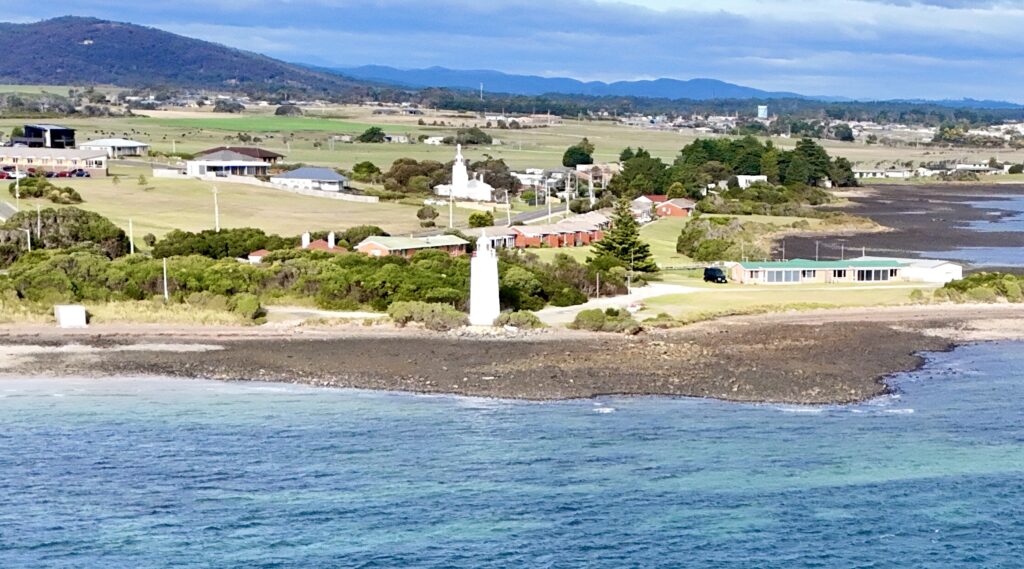

Among Low Head’s most distinctive features is its fog signal station, established in 1929 and housing Australia’s only operating Type G diaphone fog horn. This remarkable piece of maritime heritage equipment, manufactured by Chance Brothers, produced a distinctive two-tone blast that could be heard for miles during periods of poor visibility. The fog horn operated regularly until 1973 when it was decommissioned, though it has since been restored as a heritage feature and sounds once daily as a demonstration for visitors.
Like many historic lighthouses, Low Head has accumulated rich folklore of unusual occurrences over its long history. The most persistent stories involve reports of mysterious footsteps heard climbing the tower stairs at night when no one was present, attributed by some local traditions to the restless spirit of a former keeper who allegedly died while on duty in the late 19th century. Multiple subsequent keepers reported similar experiences, creating a persistent legend that remains part of the lighthouse’s cultural heritage.
Another well-documented account from 1908 describes how Head Keeper James Windle repeatedly observed unexplained lights moving on the water near dangerous Hebe Reef on clear nights when no vessels were recorded in the area. These mysterious illuminations became known locally as the “Hebe Lights” and were interpreted by some as supernatural warnings of the reef’s dangers, adding to the mystique surrounding the lighthouse station.
Though fully automated since 1984, ending more than 150 years of continuous keeper presence, Low Head found new purpose as one of Tasmania’s most significant maritime heritage sites. The lighthouse precinct has been meticulously preserved as a heritage site under the management of the Tasmanian Parks and Wildlife Service, with the keeper’s cottages now operating as heritage accommodation that allows visitors to experience life at a historic lighthouse station.
Today, Low Head Lighthouse station represents one of the most complete and well-preserved lighthouse complexes in Australia. The precinct includes the impressive lighthouse tower, keeper’s quarters, assistant keeper’s cottages, pilot station, boat sheds, and the unique fog horn building. The Maritime Museum housed in the former pilot station building documents the area’s rich nautical history, while guided tours allow visitors to climb the historic staircase to the lantern room and witness the original Chance Brothers lens in operation.

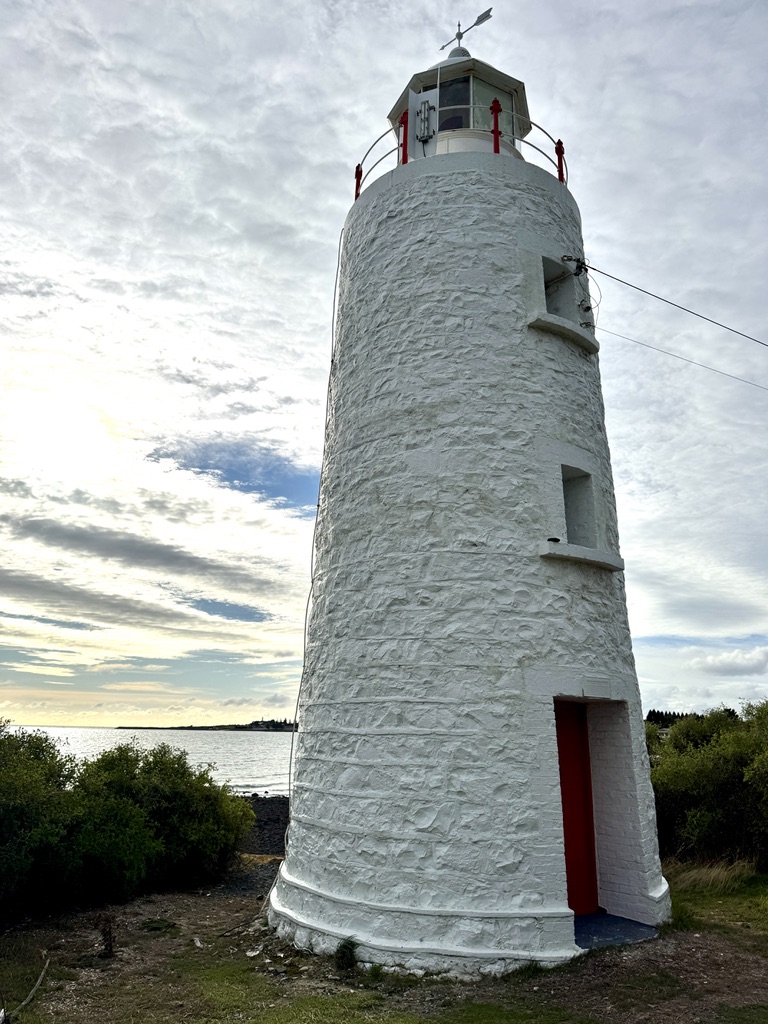
Having guided mariners safely for nearly two centuries, survived countless Bass Strait storms, and witnessed the evolution of maritime traffic from colonial sailing ships to modern vessels, Low Head Lighthouse stands as an enduring monument to Tasmania’s rich maritime heritage. Its gleaming white tower with the distinctive red band set against the dramatic coastal landscape where river meets sea, continues to be both a functioning navigational aid and a powerful symbol of Australia’s seafaring history and the human stories of dedication that defined life at this historic light station.
Technical Details:
First Exhibited: 1833 (original), 1888 (current tower)
Architect: H. Conway
Status: Active
Location: Lat: 41° 03.3330′ S Long: 146° 47.2670′ E
Original Optic: First-order Chance Brothers dioptric apparatus (1888)
Current Optic: Original first-order Chance Brothers lens (preserved)
Automated: 1984
Demanned: 1984
Construction: Brick and stone cylindrical tower with iron lantern
Height: 19 m
Elevation: 43 m
Range Nominal: 22 nml Geographical: 24 nml
Character Flashing: One flash every 15 seconds
Intensity: 440,000 cd
Light Source: Originally kerosene, currently 240V electric lamp
Power Source: Mains electricity with backup
Operator: Australian Maritime Safety Authority (AMSA); heritage site managed by Tasmanian Parks and Wildlife Service